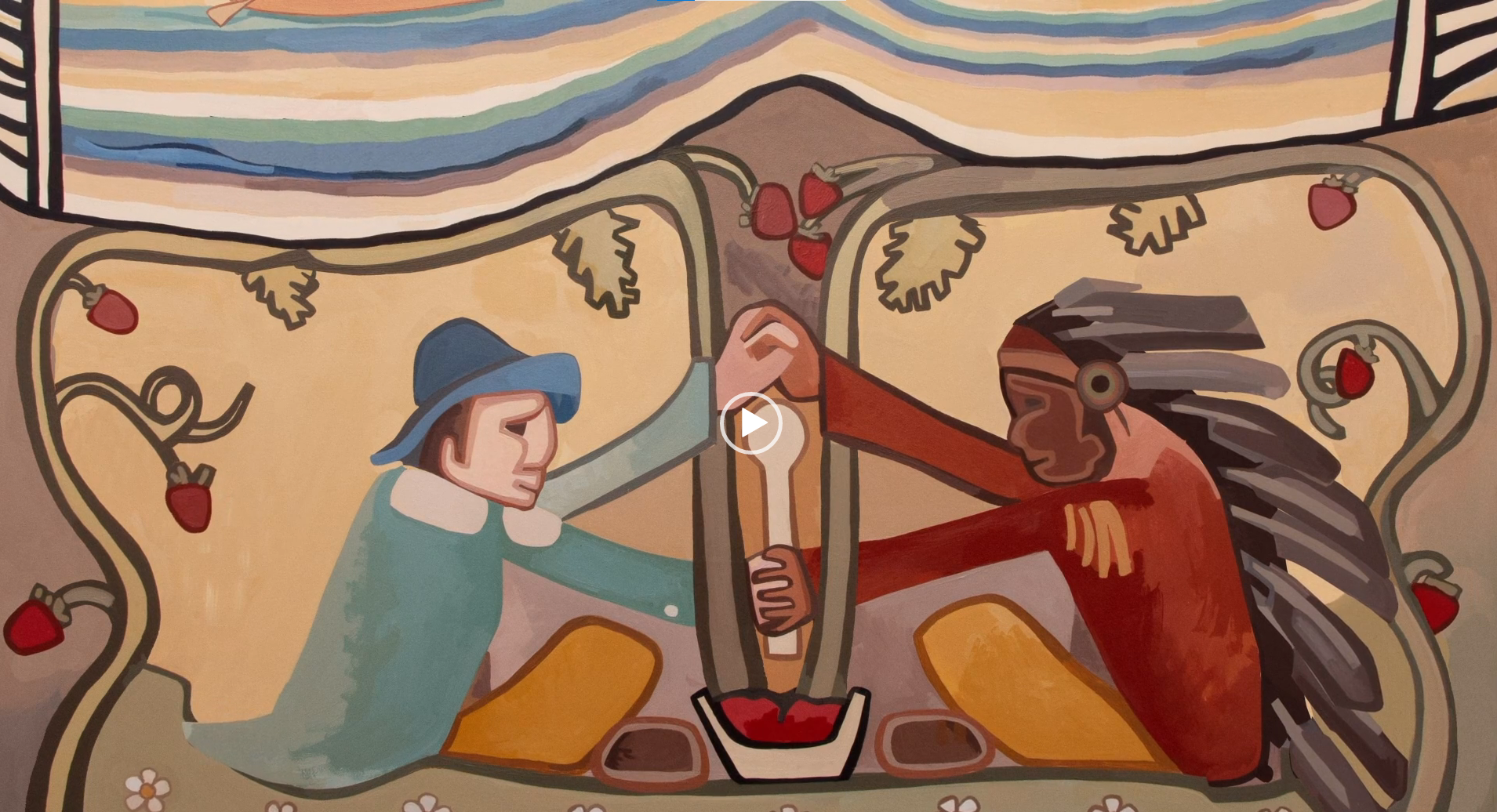If you’ve attended a U of G event – either in person or online – you’ve likely heard someone deliver a land acknowledgement; the majority of U of G events begin with one. The words spoken during a land acknowledgement are an intentional step toward reconciliation through an act of relationship. As we mark National Indigenous Peoples Day, take this opportunity to learn more about land acknowledgements and how to create them.
The information below can help you get started.
What is a land acknowledgement?
Land acknowledgements are thoughtful statements that recognize and show respect for the Indigenous experiences and history of the land we live and work on and our place within that story.
These statements should be personal, reflecting both the event and the place where it is held. Land acknowledgements should be unique for each event, not a generic statement from the University.
Land acknowledgements can be personal and include statements about your own efforts toward reconciliation. Use your land acknowledgement as an opportunity to educate others.
Why do land acknowledgements matter?
By voicing our respect and responsibility, land acknowledgements help strengthen our relationship to the land that sustains us, with First Nations, Inuit and Métis peoples who hold the land as sacred, and to one another. They help us deepen our connections to each other and to the land.
Who delivers the land acknowledgement and when?
Land acknowledgements are delivered at the start of meetings and events. They are usually delivered by the person hosting the event. Indigenous community members should not be asked to deliver the acknowledgement on behalf of the University or group. It is a distinct opportunity to have the Treaty partners welcome guests to their lands or to have an Elder or Knowledge Holder take part in in an event.
Land acknowledgements can also be shared within documents and reports or on websites.
How to create a land acknowledgement
- Start with why you’re delivering the land acknowledgement and what you want to convey. Land acknowledgements aren’t about creating a sense of guilt. They’re about recognizing the history of a place, how that history has benefitted some to the disadvantage of others and voicing a commitment to creating a better future.
- Do your research to understand the history of the place, the Indigenous peoples who reside there and the treaties, agreements and convents between Indigenous nations and with the Crown.
- Put feeling into the land acknowledgement. It’s not meant to be a script or lip service, but something you speak from the heart.
- Voice your commitment. Land acknowledgements should include steps you’re taking toward reconciliation
What should a land acknowledgement include?
Land acknowledgements should evolve over time and reflect on-going learning.
They should include:
- On whose behalf you’re delivering the land acknowledgement (e.g., yourself, a group or an organization)
- Gratitude for the land and recognition of specific Indigenous communities with a history in that place (e.g., treaty partners, local communities). Ensure you’re acknowledging the appropriate groups.
- Reasons why you’re making the land acknowledgement, including personal or organizational commitments and actions (e.g., amplifying Indigenous voices, sharing learning, revising policy, etc.).
Resources to help you develop a land acknowledgement
As you create land acknowledgements for your events, consider consulting the following resources:
- U of G’s Acknowledging the Land website – includes information about the Dish With One Spoon Covenant and examples of land acknowledgements that have been used at each of our three campuses.
- Between the Lakes Purchase – information from Mississaugas of the Credit First Nation
- Michi Saagiig Nishnaabeg: This is our Territory by Gidigaa Migizi (Doug Williams)
- Native-Land.ca map
- Whose Land map
- Ontario Map of Treaties and Reserves
Land Acknowledgements and Why They Matter
To help the University of Guelph community – specifically those on the Guelph campus – better understand land acknowledgements, grad student Ryan Matheson collaborated with local Indigenous and non-Indigenous community members to create the Land Acknowledgements and Why They Matter video.
As part of his research assistantship with Dr. Sheri Longboat, School of Environmental Design and Rural Development, Matheson collaborated with more than 20 community members to develop a script that explains the purpose of land acknowledgements and provides context for how to create them.
“It’s not just putting a statement out there and moving on – it’s recognizing how the historical and ongoing interactions between land and people directly impact why you’re sitting where you are now, and it should force you to think about what you’re going to do here,” says Matheson.
The video includes a drum song offered by Mino Ode Kwewak N’gamowak (Good Hearted Women Singers), a drum circle in Kitchener-Waterloo. This song was created by Anishinaabe Elder Jake Pine. Women from a number of First Nations, Métis and Inuit communities make up the drum circle.
Kelly Laurila, who is songcarrier for the drum circle, explains that the Prophecy Song heard in the video is about welcoming settler peoples to come together with Indigenous peoples and remembering how to be good human beings.
Says Laurila, “It’s meant to be about creating a welcoming space and bringing our lives together in a way that brings justice, and justice for Indigenous peoples in particular.”
More information about the artwork in the video is available on Anishinabe Kwe artist Jessie Buchanan’s website.
Matheson himself is of settler heritage. “I’m here as privileged and uninvited guest,” he says. “Land acknowledgements should push us to engage with that reality and not let it just wash over us.”
